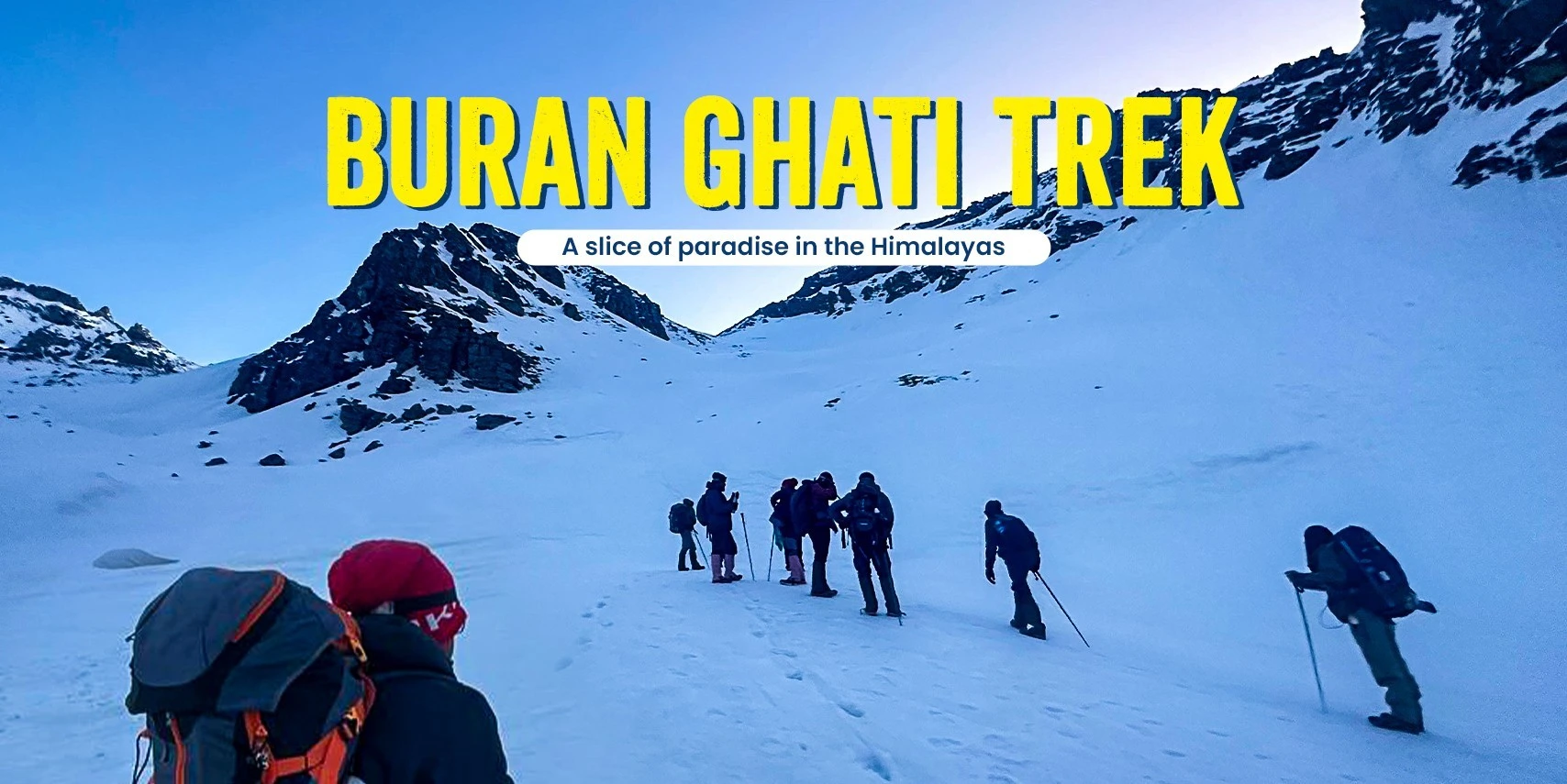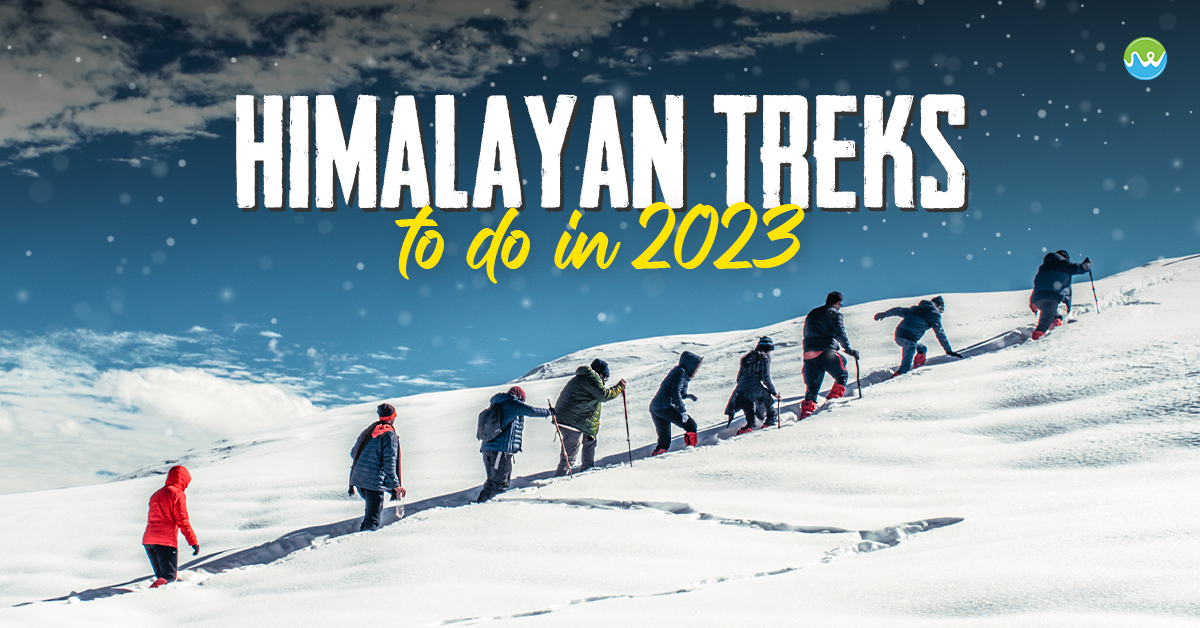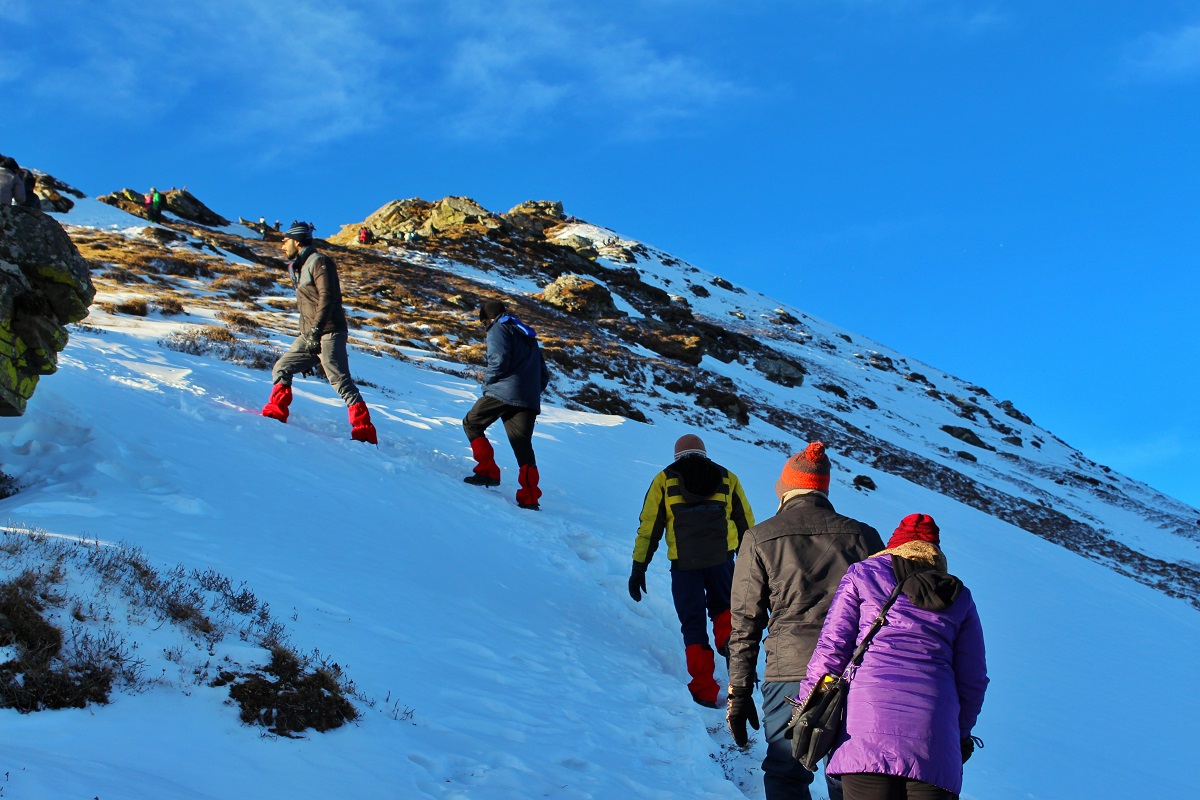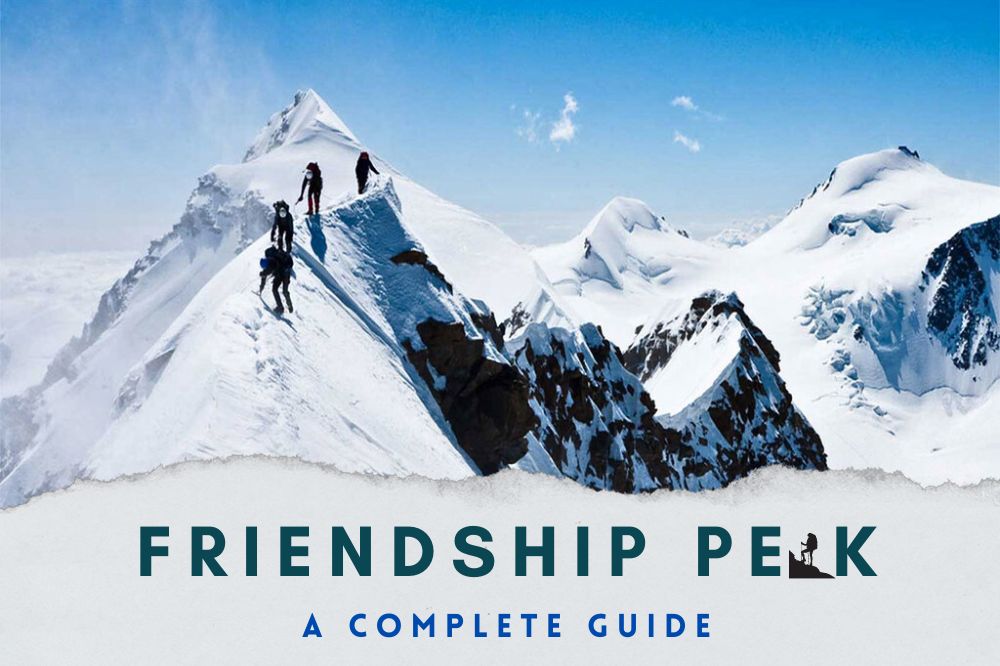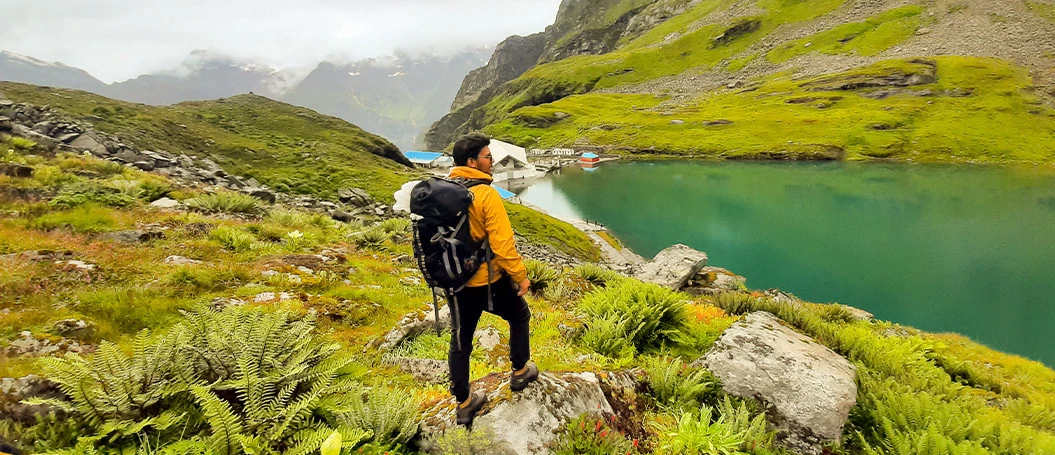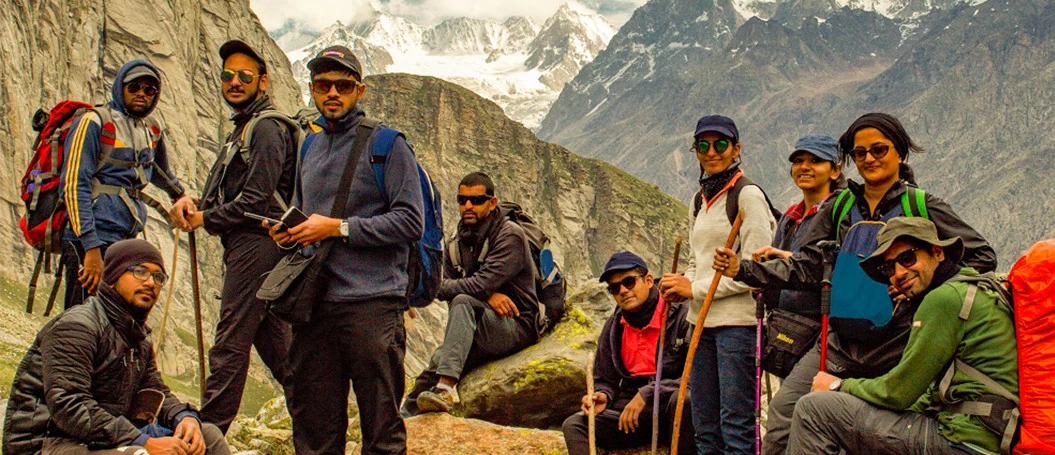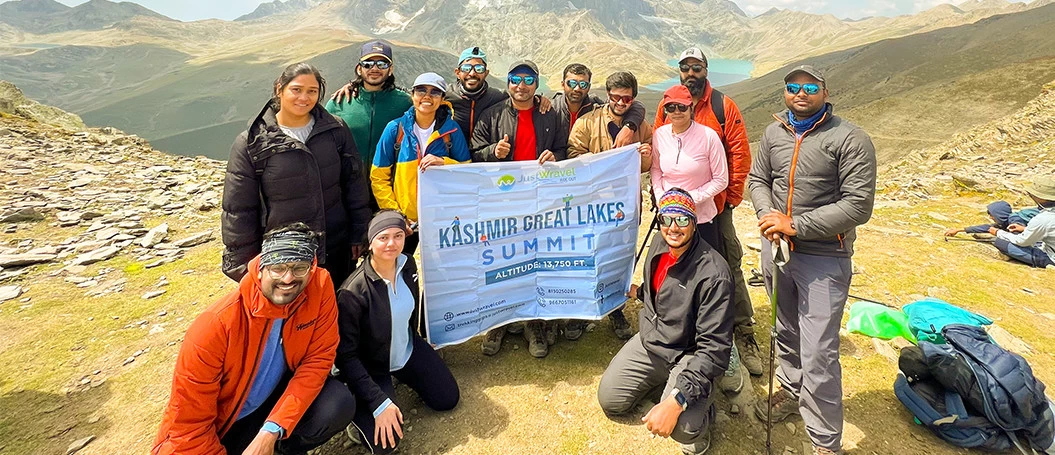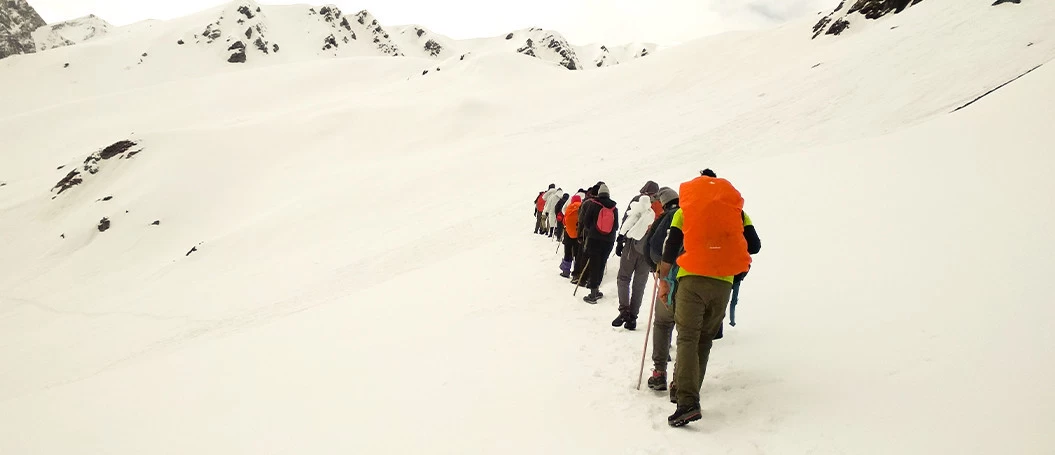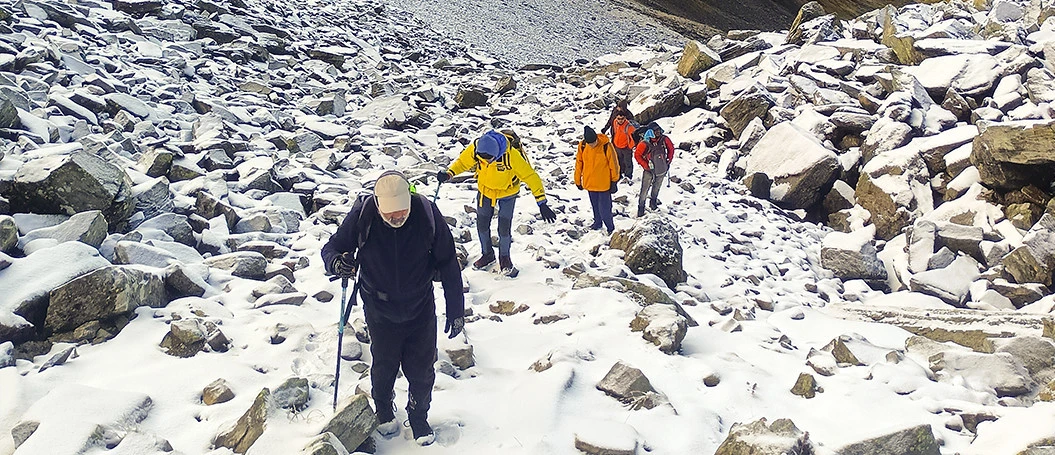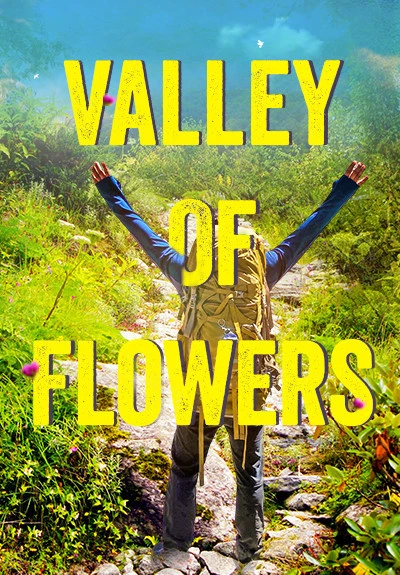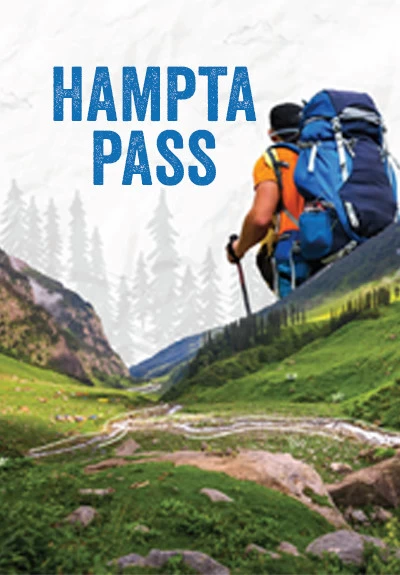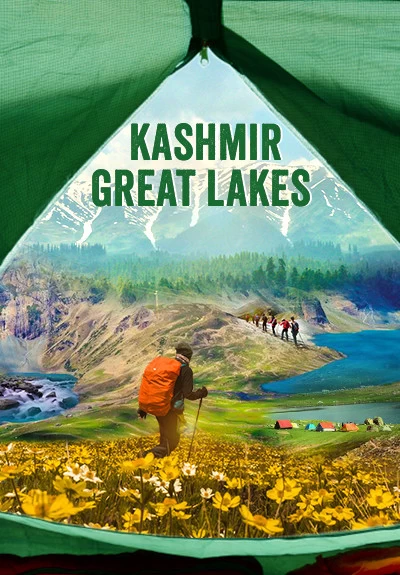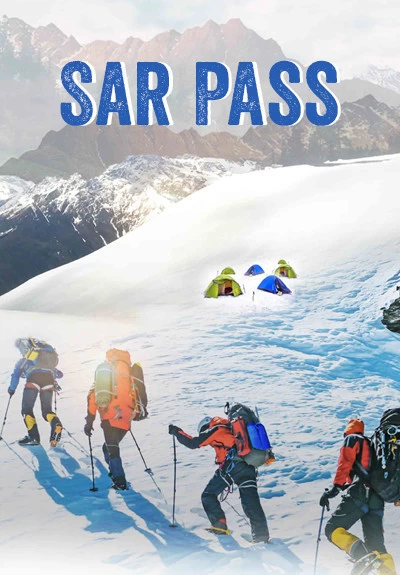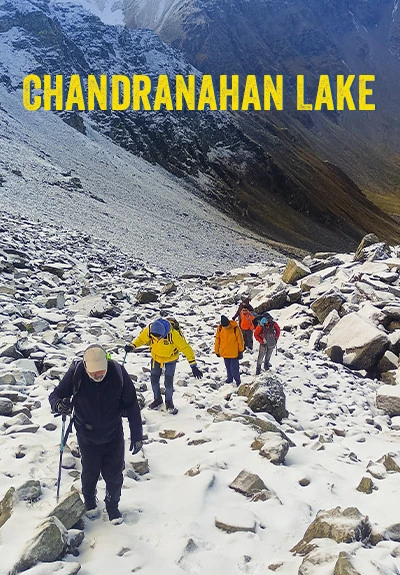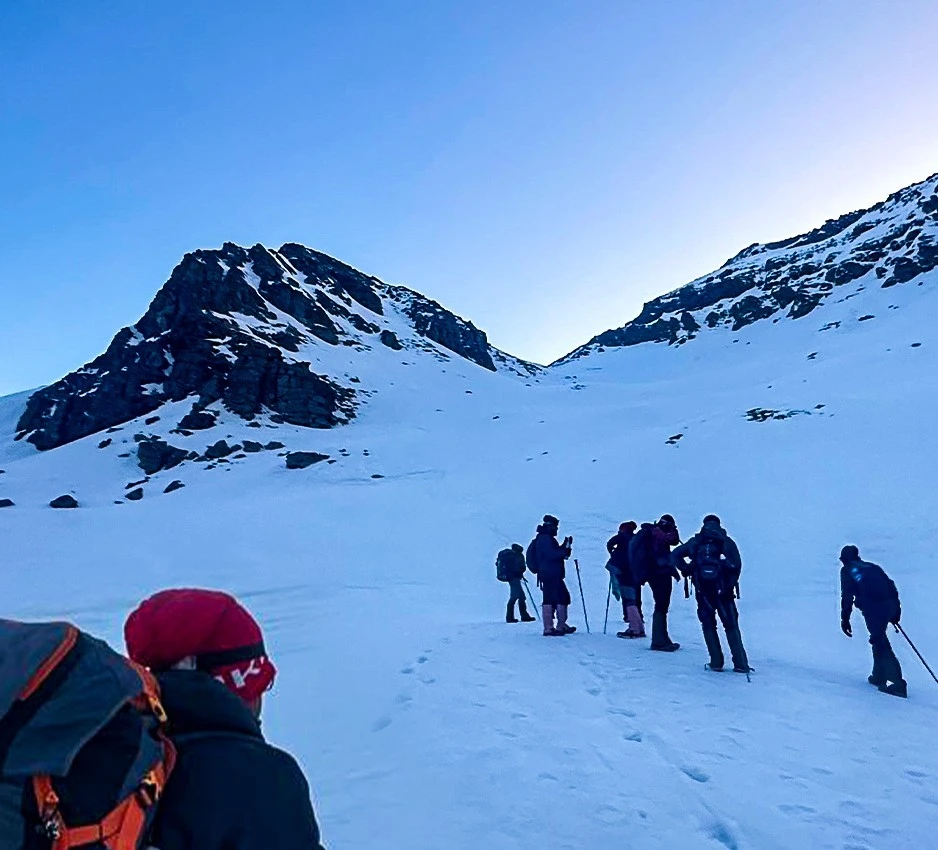
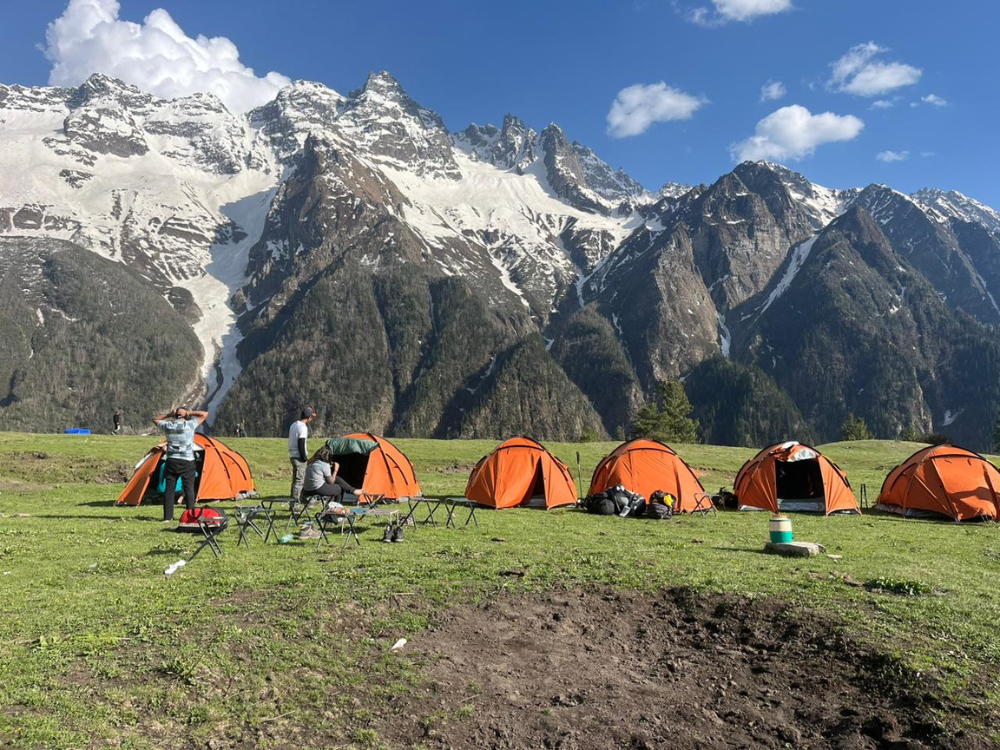
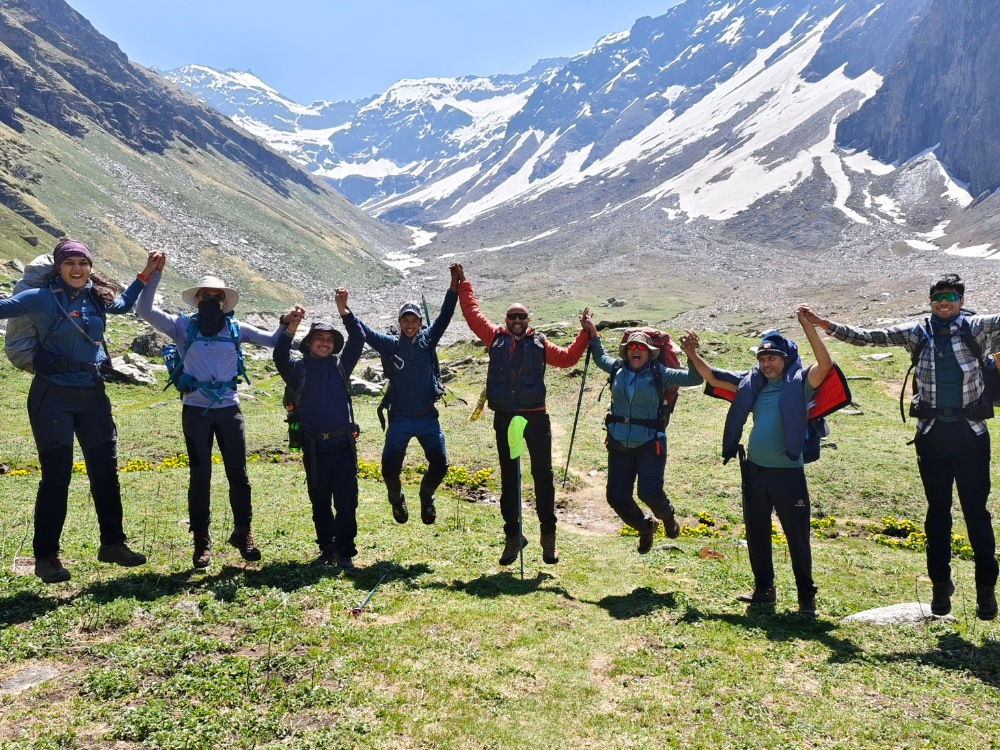
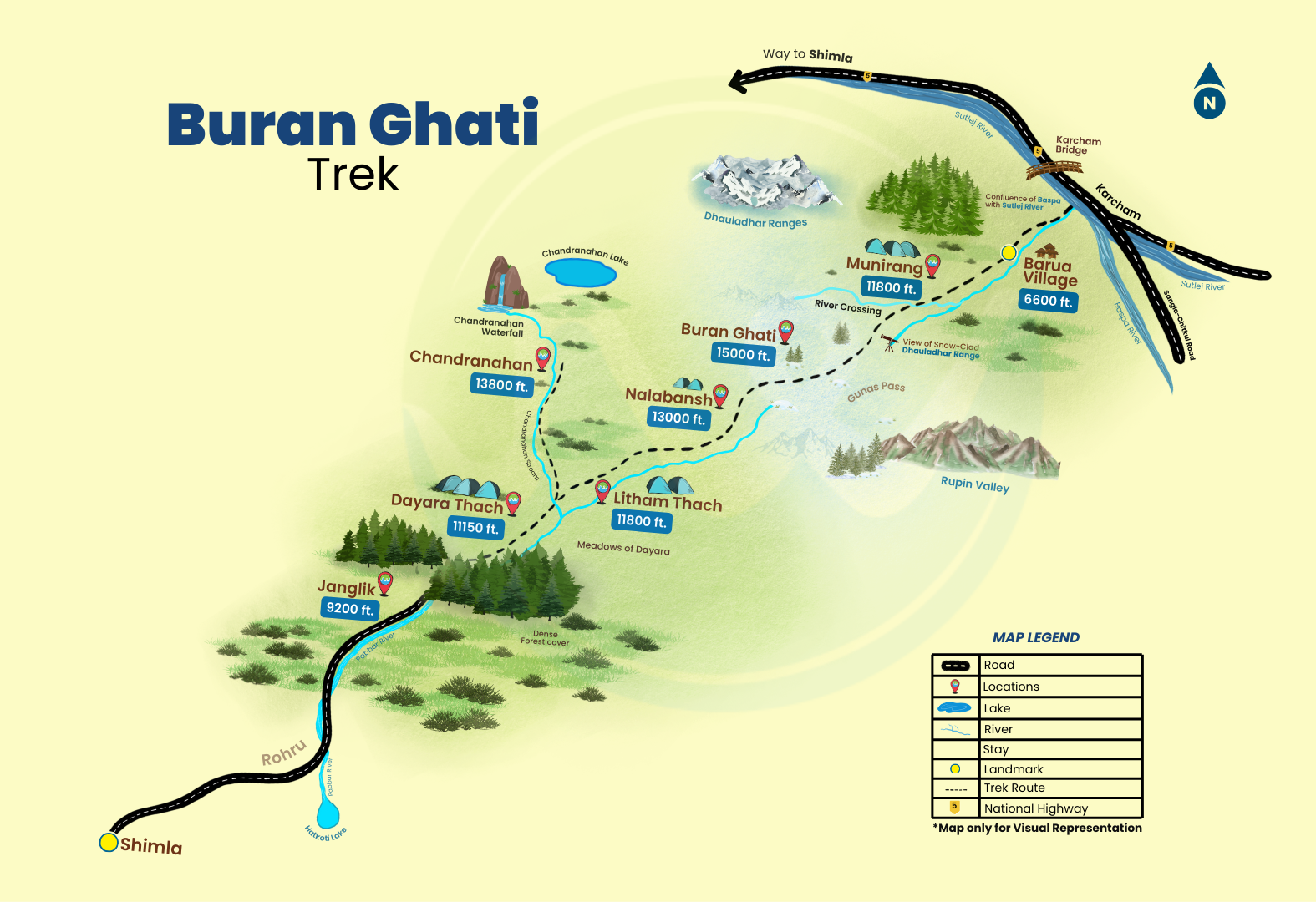
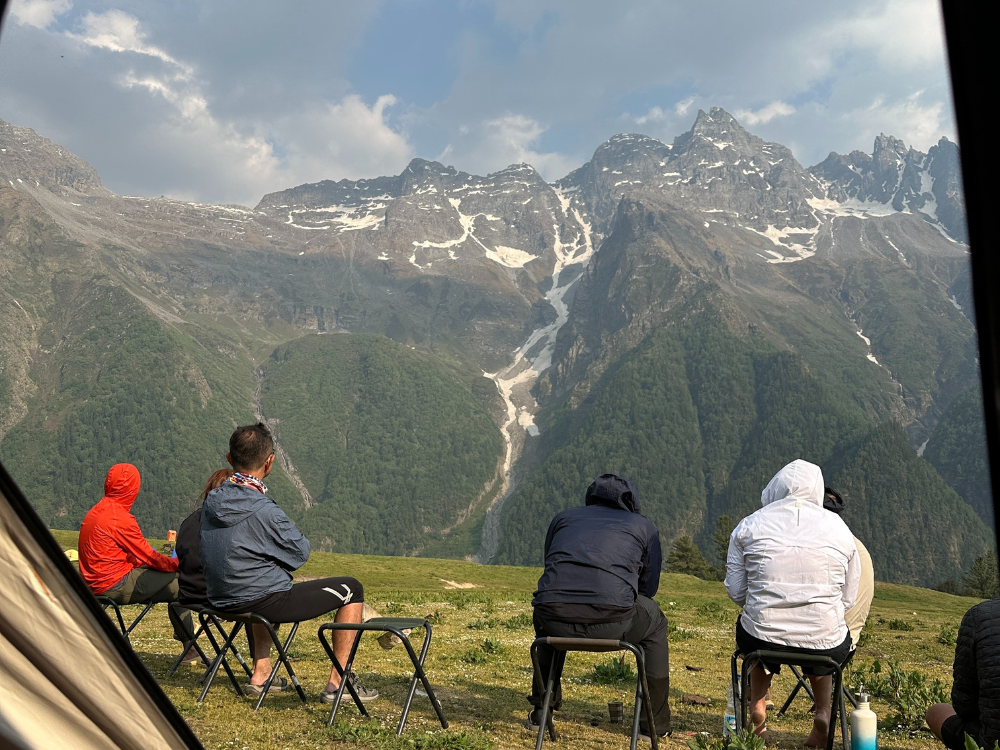
Buran Ghati Trek
Details
Inclusions
Safe Travel
Flexible Cancellation
Easy EMI
Certified Captains
24/7 Support
Overview
Get to experience the ultimate adventure on your trek to Buran Ghati which is designed for trekkers and nature enthusiasts seeking an exhilarating escape into the heart of the Himalayas. This trek, starting from the picturesque village of Janglik in Himachal Pradesh, promises a journey through dense forests, vibrant meadows, and breathtaking mountain passes. Our Buran Ghati tour package from Delhi and other parts of India ensures a seamless and unforgettable trekking experience. Your adventure begins with a drive from Shimla to Janglik, followed by a trek to Dayara Thach. As you ascend, the landscape transforms, offering panoramic vistas of snow-capped peaks and lush valleys. Crossing the Buran Ghati pass is a true test of endurance, rewarded by the awe-inspiring scenery that greets you at the summit. The trek continues through charming villages, serene meadows, and dense pine forests, providing ample opportunities to immerse yourself in nature's beauty.
Historically, Buran Ghati has been a route for shepherds and traders navigating through the rugged terrain of the Himalayas. Buran Ghati trek also presents trekkers with the enchanting beauty of Chandranahan Lake and the stunning Gunas Waterfall. Chandranahan Lake, a sacred glacial lake, is nestled in a high-altitude basin surrounded by towering peaks, offering a serene and mystical ambiance. The crystal-clear waters of the lake reflect the surrounding snow-capped mountains, creating a mesmerizing sight. The journey to the lake is dotted with vibrant alpine flora, making it a nature lover's paradise. Gunas Waterfall, another highlight of the Chandranahan Lake trek, cascading down the waterfall, set amidst dense forests and rocky outcrops, provides a refreshing and tranquil spot for trekkers to rest and soak in the natural beauty. These scenic spots add to the allure of the Buran Ghati trek, offering moments of peace and wonder amid the challenging journey.
With our experienced guides and well-planned itineraries, the Buran Ghati trek is perfect for both seasoned trekkers and adventurous beginners. JustWravel offers a well-rounded experience, balancing physical challenges with cultural exploration and natural splendor. Join us on this epic journey and create memories that will last a lifetime.
Gallery




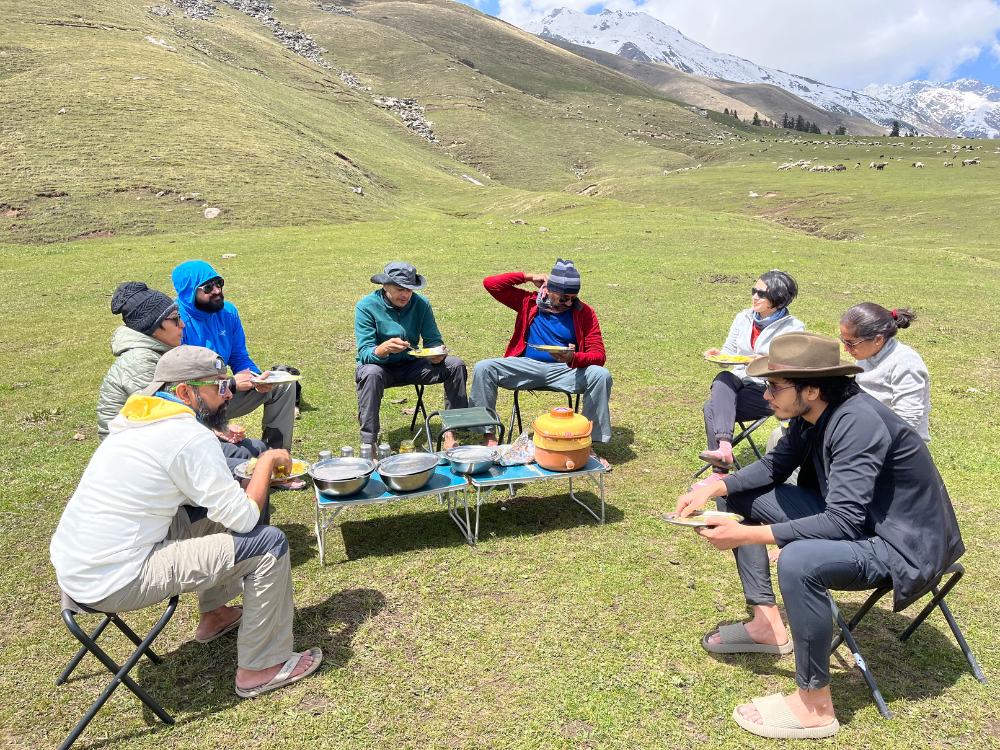
Itinerary
1
Day
Shimla to Janglik (150 kms drive)
2
Day
Janglik to Dayara Thach (8 kms trek)
3
Day
Dayara Thach to Litham Thach (6 kms trek)
4
Day
Chandranahan Lake Excursion (8 km trek)
5
Day
Litham to Nalabansh (5 km trek)
6
Day
Nalabansh to Munirang via Buran Ghati (7 km trek)
7
Day
Munirang to Barua Village, Kinnaur | Drive to Shimla (6 km trek, 200 km drive)
Age Limit (Trip Wise)
Weekend
Getaways
18-38
Himalayan
Treks
18-48
Backpacking
Trips
18-40
Biking
Trips
18-45
Customized
Trips
No Limit
Inclusions & Exclusions
| Inclusions | Exclusions |
Accommodation: 1 Night in a Guest House / Homestay in Janglik and 5 Nights Tented Accommodation on a double / triple basis sharing as per booking. Transportation: Surface transfer from Shimla – Janglik - Shimla by Sumo / Bolero / Tempo Traveler (Depending on the number of travelers). Meals: All veg meals from Day 1st Dinner to Day 7th Day Breakfast. Snacks: Morning / Evening Tea / Coffee with light snacks and soup while on the trek. Camping logistics: Trekking tent, Sleeping bags, Mattresses, Dining tent, Kitchen tent and Toilet tent. Trek Leader: Qualified and Experienced Trek leader and support staff. Permits: All necessary fees and permits. (For Indians) Trekking Equipment: Gaiters, Micro Spikes, and Rope if required. Safety Equipment: Walkie / Talkie, Basic First Aid kit with Oximeter and Oxygen Cylinder. Guide ratio: Local experience guide (depends on the group size). | Any meals during transit. Any Surface transfer during the program Fees and permits for Non-Indian residents are excluded. Porter/mule charges to carry your personal bag. Anything not mentioned explicitly in the above program. Insurance of any kind. Any expenses of a personal nature. Unscheduled stay due to landslide. Cost Escalation due to "Force Majeure" and evacuation charges. Note :- Bag offloading cost is Rs 2400 (maximum weight should not be more than 10 kg) |
Cancellation Policy
| Upto 21 days | 20-15 days | 14-8 days | 7-0 days | |
| Batch Shifting | ||||
| Cancellation Charge | Free Cancellation | 25% of the Trip Amount | 50% of the Trip Amount | 100% of the Trip Amount |
| Booking Amount | Refunded in mode of Credit Note | Adjusted in Refund Deduction | Adjusted in Refund Deduction | No Refund |
| Remaining Amount | Full Refund (minus) booking amount | Refund (minus) 25% of the trip amount | Refund (minus) 50% of the trip amount | No Refund |
Payment Policy
| Upto 21 days | 21-15 days | 14-08 days | 07-03 days | |
|---|---|---|---|---|
| Booking Amount | ||||
| 50% Payment | Optional | Compulsory | ||
| 75% Payment | Optional | Optional | Compulsory | |
| 100% Payment | Optional | Optional | Optional | Compulsory |
Things To Pack
Rucksack:
You must pick a good quality backpack with a comfortable fit and straps that won’t give you shoulder pain. You can check out your nearest Decathlon store for a good trekking backpack.
You must pick a good quality backpack with a comfortable fit and straps that won’t give you shoulder pain. You can check out your nearest Decathlon store for a good trekking backpack.
Day Bag / Day Pack:
When you head towards the summit, you are required to carry only a few necessary items and for that, you need a day backpack as you will leave your bigger one on the campsite.
When you head towards the summit, you are required to carry only a few necessary items and for that, you need a day backpack as you will leave your bigger one on the campsite.
Hiking Shoes :
Durable footwear designed for rugged terrains.
Durable footwear designed for rugged terrains.
Floaters or Sandals:
Although the entire trek requires a good quality shoe, you still need to let your feet breathe to avoid chafing and blisters. When you are at the camp, a good pair of sandals and floaters will help you to move freely.
Although the entire trek requires a good quality shoe, you still need to let your feet breathe to avoid chafing and blisters. When you are at the camp, a good pair of sandals and floaters will help you to move freely.
Tees / Tshirts:
You must keep at least three pairs of quick dry tees so that you can wash them in between stops for proper hygiene.
You must keep at least three pairs of quick dry tees so that you can wash them in between stops for proper hygiene.
Poncho:
A poncho is an evolved form of a raincoat that provides coverage to your body as well as your bag and ensures total water protection from rain.
A poncho is an evolved form of a raincoat that provides coverage to your body as well as your bag and ensures total water protection from rain.
Quick Dry Towel:
A quick dry towel will help in maintaining proper hygiene. It must dry quickly because the wet fabric will only increase the chance of bacterial growth.
A quick dry towel will help in maintaining proper hygiene. It must dry quickly because the wet fabric will only increase the chance of bacterial growth.
Sanitizer:
Essential for maintaining cleanliness while trekking.
Essential for maintaining cleanliness while trekking.
Sun Cap / Hat:
A lightweight sun cap with side flaps is perfect to keep your head cool and avoid sunburns on a sunny day.
A lightweight sun cap with side flaps is perfect to keep your head cool and avoid sunburns on a sunny day.
Sunscreen SPF 40+:
To avoid sunburns and chafing, you need to put on sunscreen as well as cold cream.
To avoid sunburns and chafing, you need to put on sunscreen as well as cold cream.
Water Bottle (Re-usable):
Hydration is extremely important when it comes to trekking. Carrying a water bottle that you can refill with Himalayan water is a must.
Hydration is extremely important when it comes to trekking. Carrying a water bottle that you can refill with Himalayan water is a must.
Personal Toiletries:
A bag with all your essentials including napkins, toothpaste, sanitizers, paper soap, etc should be carried in a ziplock bag.
A bag with all your essentials including napkins, toothpaste, sanitizers, paper soap, etc should be carried in a ziplock bag.
Personal Medication / First Aid:
A few cuts and bruises are almost inevitable when you are on a trek so carrying a medical kit with bandages, Dettol, etc is necessary.
A few cuts and bruises are almost inevitable when you are on a trek so carrying a medical kit with bandages, Dettol, etc is necessary.
Sun Glasses / Reading Glasses:
Photochromatic glasses are specs that are designed to transform into anti-glare shades depending upon exposure to the sun. They are good when it comes to eye protection but one can also opt for clip-on glasses etc.
Photochromatic glasses are specs that are designed to transform into anti-glare shades depending upon exposure to the sun. They are good when it comes to eye protection but one can also opt for clip-on glasses etc.
Charger:
To keep your electronic devices powered during the trip.
To keep your electronic devices powered during the trip.
Power Bank:
Ensures your devices stay charged when there are no outlets.
Ensures your devices stay charged when there are no outlets.
Personal Documents & ID's:
Identification proofs like Aadhar Card, Drivers License.
Identification proofs like Aadhar Card, Drivers License.
Laundry Bag (Waterproof):
In case your clothes get wet or your garments don’t dry, you can carry them in polythene. However, make sure that all the plastic that you are carrying into the woods leaves with you. Don’t litter in the mountains.
In case your clothes get wet or your garments don’t dry, you can carry them in polythene. However, make sure that all the plastic that you are carrying into the woods leaves with you. Don’t litter in the mountains.
Track Pants:
A good pair of track pants made of polyester will let your skin breathe. They’re lightweight, dry easily, and comfortable to walk around in. You can easily avoid chafing and rashes by investing in a good pair of track pants.
A good pair of track pants made of polyester will let your skin breathe. They’re lightweight, dry easily, and comfortable to walk around in. You can easily avoid chafing and rashes by investing in a good pair of track pants.
Trekking Shoes:
A good trekking shoe is comfortable, provides ankle support, and has a good grip as well. They shouldn’t be chunky, instead, they should be lightweight and sturdy.
A good trekking shoe is comfortable, provides ankle support, and has a good grip as well. They shouldn’t be chunky, instead, they should be lightweight and sturdy.
Cotton Socks:
Cotton socks are extremely comfortable to move around in and are lightweight as well which is why you can always count on a good pair of cotton socks while trekking. However, keep in mind to change them and avoid wearing them when they are wet.
Cotton socks are extremely comfortable to move around in and are lightweight as well which is why you can always count on a good pair of cotton socks while trekking. However, keep in mind to change them and avoid wearing them when they are wet.
Woolen Socks:
A good pair of woolen socks, especially merino, are comfortable, limit odors and provide adequate insulation from the cold so you can wear them at night.
A good pair of woolen socks, especially merino, are comfortable, limit odors and provide adequate insulation from the cold so you can wear them at night.
Woolen Gloves:
Insulated gloves help in maintaining proper body heat in your hands and also provide a better grasp on trekking poles.
Insulated gloves help in maintaining proper body heat in your hands and also provide a better grasp on trekking poles.
Main Jacket:
It’s emphasized that you need to carry proper layers so you can avoid getting cold which is why you need to carry a heavy jacket that you can put on over your other clothes.
It’s emphasized that you need to carry proper layers so you can avoid getting cold which is why you need to carry a heavy jacket that you can put on over your other clothes.
Woolen Cap:
A woolen cap will help prevent cold when you ascend to high altitude. You can also cover your ears to avoid any pain and discomfort you might face in them when going at high altitudes.
A woolen cap will help prevent cold when you ascend to high altitude. You can also cover your ears to avoid any pain and discomfort you might face in them when going at high altitudes.
Hoodie:
A versatile layering option for various temperatures.
A versatile layering option for various temperatures.
Scarf / Balaclava:
Along with sun rays and chilly winds, you also get hit by dirt and grime during treks which is why it's important to carry a scarf or balaclava so you can cover your face when needed.
Along with sun rays and chilly winds, you also get hit by dirt and grime during treks which is why it's important to carry a scarf or balaclava so you can cover your face when needed.
Head Lamp:
You can’t rely on moonlight when you are in the mountains. A torch or even a headlamp with a fresh pair of batteries is always a good idea to bring along.
You can’t rely on moonlight when you are in the mountains. A torch or even a headlamp with a fresh pair of batteries is always a good idea to bring along.
Trekking Pole:
The trekking pole assists in more than one way. It saves energy while also providing stability and helps you to maintain proper balance.
The trekking pole assists in more than one way. It saves energy while also providing stability and helps you to maintain proper balance.
Camera:
This should be obvious. To make sure that you get to capture all the great moments from your trek. Make sure that you have enough storage and some extra batteries as well.
This should be obvious. To make sure that you get to capture all the great moments from your trek. Make sure that you have enough storage and some extra batteries as well.
Riding Gear:
If your trip involves biking or motorcycling.
If your trip involves biking or motorcycling.
Moisturiser & Cold Cream:
To avoid sunburns and chafing, you need to put on sunscreen as well as cold cream.
To avoid sunburns and chafing, you need to put on sunscreen as well as cold cream.
Lip Balm:
Your lips can become chapped due to the harsh cold winds so it's important to keep them moisturized.
Your lips can become chapped due to the harsh cold winds so it's important to keep them moisturized.
Sanitary Pads:
Essential for feminine hygiene.
Essential for feminine hygiene.
Insect Repellent:
Guards against pesky bugs and insects.
Guards against pesky bugs and insects.
Cash:
Emergency funds for unexpected situations.
Emergency funds for unexpected situations.
Thermals:
Thermal is a piece of garment that helps in keeping your body warm in cold temperatures. It is a necessary item that you need when going on a high-altitude trek.
Thermal is a piece of garment that helps in keeping your body warm in cold temperatures. It is a necessary item that you need when going on a high-altitude trek.
Snacks / Dryfruits / Energy Bar:
Provides quick energy on the go.
Provides quick energy on the go.
Positive Attitude:
The most important item for a successful trek or trip, keeping your spirits high and adaptable to the challenges of the journey.
The most important item for a successful trek or trip, keeping your spirits high and adaptable to the challenges of the journey.
Best Time To Visit Buran Ghati Trek
The Buran Ghati Trek is a stunning adventure that showcases the beauty of the Himalayas, and choosing the right time to trek is crucial for a rewarding experience. The best months for this trek are during the pre-monsoon (mid-May to June) and post-monsoon (September to October) seasons.
The post-monsoon season offers a different set of experiences. Daytime temperatures generally range from 10°C to 20°C (50°F to 68°F) at lower altitudes, providing pleasant trekking conditions. Nights can be cold, often dropping to around 0°C (32°F) or lower as October progresses. The clear skies during this period allow for stunning views of the surrounding mountains and landscapes, making it an excellent time for photography. The landscapes are particularly vibrant, with a rich palette of autumn colors, including yellows, oranges, and browns. While lower altitudes may have little to no snow, trekkers can still encounter snow at higher elevations, particularly as they approach the Buran Ghati Pass. The weather is relatively stable during this time, minimizing the chances of heavy rainfall or snowfall, which enhances safety and enjoyment. Trekkers may also have opportunities to spot local wildlife during this period.
| Season | Temperature Range (Day/Night) | Key Features |
| Pre-Monsoon | 13°C - 22°C / 0°C | Snow-covered trails, blooming wildflowers, ice wall rappelling |
| Post-Monsoon | 10°C - 20°C / 0°C | Clear skies, vibrant autumn colors, wildlife sightings |
Buran Ghati Trek is best experienced during the pre-monsoon (mid-May to June) and post-monsoon (September to October) seasons. Each season offers unique challenges and breathtaking beauty, making it essential to choose the time that aligns with your trekking preferences and experience level. Whether you prefer the thrill of snow-covered trails or the vibrant colors of autumn, the Buran Ghati Trek promises an unforgettable adventure in the Himalayas.
How To Reach Buran Ghati
Shimla, the picturesque capital of Himachal Pradesh, is a popular hill station known for its scenic beauty, colonial architecture, and pleasant climate. Shimla is the starting point of our Buran Ghati Trek and the plus point of Shimla is it is very connected with air, rail, and road.
By Air
The nearest airport to Shimla is Jubbarhatti Airport, located about 22 km from the city center. However, it has limited flights, primarily from Delhi. A more reliable option is to fly into Chandigarh Airport, which is approximately 122 km away from Shimla. From Chandigarh, you can take a bus or hire a taxi, reaching Shimla in about 4 hours.
By Train
Shimla is accessible via the iconic Kalka-Shimla Toy Train, a UNESCO World Heritage site that offers a scenic journey through the mountains. To reach Shimla by train, take a train to Kalka, and then board the Toy Train, which takes around 5-6 hours. Alternatively, you can travel to Chandigarh by train and then continue your journey to Shimla by bus or taxi.
By Bus
Shimla is well-connected by a network of buses from major cities such as Delhi, Chandigarh, and Dehradun. From Delhi, you can board an overnight AC bus, which takes approximately 10-11 hours. Buses from Chandigarh take around 4 hours to reach Shimla.
Reasons to Visit Buran Ghati Trek
The Buran Ghati Trek in Himachal Pradesh is a popular trekking route known for its stunning natural beauty, diverse landscapes, and thrilling adventure. Trekkers can expect to explore pristine meadows, dense forests, snow-capped peaks, and the challenging Buran Ghati Pass at an altitude of 15,000 feet. The trek also offers a cultural experience by taking you through remote villages and providing insights into the traditional Himalayan way of life.
Scenic Beauty
The Buran Ghati Trek offers breathtaking views of the Himalayan landscape, including lush meadows, dense forests, pristine rivers, and stunning mountain peaks. The landscapes are especially vibrant and picturesque during the post-monsoon season, making it a visual delight for trekkers and nature lovers.
Adventure
The trek is known for its adventure quotient, with challenging terrain, river crossings, and the excitement of crossing the Buran Ghati Pass. The presence of snowfields and varied trail conditions add an adventurous element to the trek. Trekkers can enjoy the thrill of rappelling down the Buran Ghati wall and sliding down snow chutes.
Cultural Experience
The trek takes you through remote villages like Janglik and Barua, offering opportunities to interact with the local inhabitants. This provides insights into the traditional Himalayan way of life and culture, which is still well-preserved in these areas.
Diverse Landscapes
The Buran Ghati Trek showcases a variety of landscapes, from dense oak and pine forests to vast green meadows, high-altitude sharp edges, snow-capped peaks, and charming villages. The contrasting campsites are a feast for photographers, immersing them in the beauty of nature.
Chandranahan Lake
The high-altitude Chandranahan Lake is one of the highlights of the trek. Many locals consider this lake sacred, and it offers breathtaking views from both sides of the Buran Ghati Pass. Trekkers can also do an acclimatization hike near the lake, which is crucial for adjusting to the high altitude.
Why Trek with JustWravel
Choosing the right trek is easy, but selecting the right trekking company is the real challenge, especially when venturing into the remote areas of the Himalayas. The experience and credibility of a trekking organization are crucial factors you need to consider. We understand these concerns, and that’s why we want to show you why JustWravel is your ideal trekking partner for the Buran Ghati Trek.
Put on your Shark Tank sunglasses because, after our pitch, you'll be eager to pack your bags for the Buran Ghati Trek!
- The Safest Travel Community in India: For us, safety comes first, and the fun, adventure, and thrill of a trek come later.
- From the Mountains with Love: Yes, that’s us. Most of our trekking coordinators are from the mountains; they share year-round knowledge of how pahadi life is. Nobody knows the mountains better than the people who have grown up playing on its slopes. To ensure you have the safest and most enthralling experience, we make sure to hire local guides. Most of our vendors are also natives, which assures an exchange of healthy and profitable business on both ends.
- Certified Trek Captains: Our Trek Captains are both BMC and AMC (Advanced Mountaineering Course) certified and are highly skilled medics. They know every nook and cranny of the trail and are equipped with extensive knowledge to handle any situation.
- The Experience of Years: Our knowledge is not merely theoretical. We ventured into the mountains years ago, and through our experiences, we’ve learned valuable lessons that we pass on to our trekkers.
- Taking What We Took There: This is what sets us apart in the market. We never litter the mountains. What we bring to the mountains, we take back for sure. Read below to learn more about our Keep The Trails Alive campaign.
Keep The Trails Alive
Don’t be a Crap Bag
You are in nature’s lap
Kindly take that garbage back
If you’re wondering what our Keep the Trails Alive campaign is all about, it’s simple: without proper management, many sacred mountains are facing littering due to over-tourism. As responsible trekkers, we will never let that happen. If you’re trekking with JustWravel, you need to ensure that everything you carry in, you carry out. We will never leave anything behind except our love and a piece of our hearts for the majestic views we experience.
- Reusable: Always carry your own water bottle and cutlery to reuse them.
- Carry Out What You Carry In: Always pack out all your waste, including food wrappers, bottles, tissues, and sanitary items. Never leave anything behind.
- Use Toilet Tents and Dig Pits: Bury human waste in deep pits (6+ inches) to prevent contamination. Dispose of toilet paper and sanitary waste in your trash bag.
- Manage Food Waste Carefully: Bury leftover food and peels away from water sources. Avoid feeding wildlife to prevent dependency.
- Dispose of Waste Properly: Carry out all waste and dispose of it responsibly at designated collection points or in towns. Avoid burning waste.
- Avoid Polluting Water Sources: Wash dishes, clothes, and yourself away from streams and lakes. Use biodegradable soap sparingly.
- Educate Yourself and Others: Learn local waste management practices and follow them. Teach fellow trekkers and porters about responsible disposal.
Everything You Need To Know About JW Trekking
Dry Pits
Dry pits are a crucial waste management solution in trekking environments, particularly in remote areas where traditional plumbing is unavailable. These systems consist of deep holes dug into the ground, designed to safely contain human waste. The primary benefit of dry pits is their ability to facilitate the natural decomposition of waste, which minimizes the environmental impact associated with human activity in pristine natural areas. By using dry pit systems, trekkers help protect water sources from contamination. The implementation of dry pits not only improves hygiene for trekkers by providing designated areas for sanitation but also promotes awareness and education about sustainable practices within local communities.
Bathing
While the idea of bathing after a long day of trekking may seem appealing, it is generally discouraged for several important reasons. As trekkers ascend to higher altitudes, they encounter significantly colder temperatures, especially at night. Bathing in cold water can lead to rapid heat loss, particularly in vulnerable areas such as the legs and head, increasing the risk of hypothermia. Additionally, access to bathing facilities is often limited in remote trekking areas, making it impractical and unsafe. Engaging in bathing can also cause the body to expend extra energy to maintain its core temperature, which may hinder the acclimatization process necessary for high-altitude trekking. Instead, most trekking itineraries include a stop at a base camp where trekkers can enjoy warmer conditions and facilities for bathing, allowing for a more comfortable and safer experience.
Bonfire
Bonfires are typically prohibited during treks for several compelling reasons that prioritize environmental conservation and safety. One of the main concerns is the environmental impact of gathering firewood, which can lead to deforestation and habitat destruction in ecologically sensitive areas. Removing wood from these environments disrupts local ecosystems and can have long-lasting effects on biodiversity. Additionally, open fires pose a significant risk of attracting wildlife, including potentially dangerous animals such as bears. The smell of food and smoke can draw these creatures closer to campsites, increasing the likelihood of dangerous encounters for trekkers.
Vegetarian Food
Providing vegetarian meals during treks is a deliberate choice that offers numerous benefits. Vegetarian food is generally easier to store and prepare in remote areas, as ingredients like lentils, beans, and grains have longer shelf lives and require less refrigeration. This practicality is crucial in environments where access to resources is limited. Additionally, vegetarian meals minimize the risk of attracting wildlife to campsites, which can be a significant safety concern. Non-vegetarian food can draw animals closer, creating potential dangers for trekkers. Vegetarian meals can be highly nutritious, offering essential vitamins, minerals, and protein that are vital for sustaining energy during physically demanding treks. Ingredients such as nuts, seeds, and legumes are energy-dense and provide the necessary fuel for trekkers. Lastly, vegetarian cuisine can be diverse and flavorful, incorporating local ingredients and spices that enhance the trekking experience, allowing trekkers to enjoy a variety of delicious dishes while minimizing their environmental impact.
Plan B and C
Having contingency plans, often referred to as Plan B and C, is a vital aspect of trekking, especially in mountainous regions where conditions can change unexpectedly. The weather in these environments can be unpredictable, with storms, snow, or high winds potentially altering planned routes. By preparing alternative plans, trekkers can adapt to changing conditions and ensure their safety. Experienced trekking organizations emphasize the importance of these backup plans, as they allow for swift responses in the event of emergencies, such as injury or illness. This adaptability is crucial for maintaining the safety and comfort of all participants. With years of trekking experience, guides develop a keen understanding of the mountains and can assess conditions effectively, ensuring that trekkers remain safe and comfortable throughout their journey. Ultimately, being prepared with multiple plans enhances the overall trekking experience, allowing trekkers to enjoy their adventure with the confidence that they can navigate any challenges that may arise.
Acclimatization
Acclimatization is a critical process that allows trekkers to adjust to the physiological changes that occur when ascending to high altitudes. As trekkers gain elevation, the body must adapt to decreased oxygen levels and lower atmospheric pressure to prevent altitude sickness, which can occur if one ascends too quickly without allowing sufficient time for adjustment. Effective acclimatization involves a gradual ascent, ideally limiting elevation gain to no more than 300-500 meters (about 1,000-1,600 feet) per day above 3,000 meters (approximately 9,800 feet). This slow increase allows the body to adapt to the changing environment. Staying well-hydrated is also essential, as dehydration can exacerbate symptoms of altitude sickness; trekkers should aim to drink at least 3-4 liters of water daily. Incorporating rest days at higher altitudes is another important strategy, as these days allow the body to adjust while engaging in light activities. Trekkers should also be attentive to their bodies, recognizing the signs of altitude sickness, which may include headaches, nausea, dizziness, and fatigue. If symptoms arise, descending to a lower altitude is often the most effective course of action. Lastly, consuming a balanced diet rich in carbohydrates can help provide the energy needed for acclimatization, with foods that are easy to digest and high in calories being particularly beneficial during treks. Understanding and implementing these key aspects of acclimatization can significantly enhance the safety and enjoyment of trekking experiences in high-altitude environments.
VIDEOS
Memories for Life
posts
Instagram Images
REVIEWS
What our Clients Say About Us
blogs
Our Blogs
Faq
Have any Doubts
How difficult is Buran Ghati Trek?
The Buran Ghati Trek is considered moderately difficult, and suitable for trekkers with some prior experience. The challenging terrains, including the steep climb to the Buran Ghati Pass and navigating snow fields, require good physical fitness and endurance.
How many days is Buran Ghati Trek?
The Buran Ghati Trek typically spans 7 days, covering approximately 37 kilometers. This includes the journey from the base camp at Janglik to Barua, passing through the scenic landscapes of Himachal Pradesh.
Is Buran Ghati for beginners?
Buran Ghati Trek is not recommended for beginners due to its moderate difficulty level. Trekkers need to have good physical fitness and some prior trekking experience to navigate the challenging sections of the trail, especially the steep ascent to the Buran Ghati Pass.
How do I prepare for Buran Ghati Trek?
Preparation for Buran Ghati Trek involves regular cardio exercises, strength training, and stamina building. It's essential to practice trekking with a backpack and acclimatize to high altitudes. Checking the Buran Ghati weather forecast and packing appropriate gear are crucial for a successful trek.
How long is Buran Ghati Trek?
The Buran Ghati Trek covers a total distance of approximately 37 kilometers. The trek starts from Janglik and ends at Barua, taking you through diverse terrains and offering spectacular views.
Which is the best time for Buran Ghati Trek?
The best time for Buran Ghati Trek is during the pre-monsoon months of May to June and the post-monsoon months of September to October. During these periods, the weather is favorable, and the Buran Ghati temperature is moderate, making the trek more enjoyable.
What is the height of Buran Ghati?
Buran Ghati, also known as Buran Pass, stands at an impressive height of 15,000 feet (4,572 meters) above sea level. This high-altitude pass offers breathtaking views of the surrounding peaks and valleys.
TRIPS
Related Trips





Buran Ghati Trek
Details
Inclusions
Safe Travel
Flexible Cancellation
Easy EMI
Certified Captains
24/7 Support
Overview
Get to experience the ultimate adventure on your trek to Buran Ghati which is designed for trekkers and nature enthusiasts seeking an exhilarating escape into the heart of the Himalayas. This trek, starting from the picturesque village of Janglik in Himachal Pradesh, promises a journey through dense forests, vibrant meadows, and breathtaking mountain passes. Our Buran Ghati tour package from Delhi and other parts of India ensures a seamless and unforgettable trekking experience. Your adventure begins with a drive from Shimla to Janglik, followed by a trek to Dayara Thach. As you ascend, the landscape transforms, offering panoramic vistas of snow-capped peaks and lush valleys. Crossing the Buran Ghati pass is a true test of endurance, rewarded by the awe-inspiring scenery that greets you at the summit. The trek continues through charming villages, serene meadows, and dense pine forests, providing ample opportunities to immerse yourself in nature's beauty.
Historically, Buran Ghati has been a route for shepherds and traders navigating through the rugged terrain of the Himalayas. Buran Ghati trek also presents trekkers with the enchanting beauty of Chandranahan Lake and the stunning Gunas Waterfall. Chandranahan Lake, a sacred glacial lake, is nestled in a high-altitude basin surrounded by towering peaks, offering a serene and mystical ambiance. The crystal-clear waters of the lake reflect the surrounding snow-capped mountains, creating a mesmerizing sight. The journey to the lake is dotted with vibrant alpine flora, making it a nature lover's paradise. Gunas Waterfall, another highlight of the Chandranahan Lake trek, cascading down the waterfall, set amidst dense forests and rocky outcrops, provides a refreshing and tranquil spot for trekkers to rest and soak in the natural beauty. These scenic spots add to the allure of the Buran Ghati trek, offering moments of peace and wonder amid the challenging journey.
With our experienced guides and well-planned itineraries, the Buran Ghati trek is perfect for both seasoned trekkers and adventurous beginners. JustWravel offers a well-rounded experience, balancing physical challenges with cultural exploration and natural splendor. Join us on this epic journey and create memories that will last a lifetime.
Itinerary
1
Day
Shimla to Janglik (150 kms drive)
2
Day
Janglik to Dayara Thach (8 kms trek)
3
Day
Dayara Thach to Litham Thach (6 kms trek)
4
Day
Chandranahan Lake Excursion (8 km trek)
5
Day
Litham to Nalabansh (5 km trek)
6
Day
Nalabansh to Munirang via Buran Ghati (7 km trek)
7
Day
Munirang to Barua Village, Kinnaur | Drive to Shimla (6 km trek, 200 km drive)
Age Limit (Trip Wise)
Weekend
Getaways
18-38
Himalayan
Treks
18-48
Backpacking
Trips
18-40
Biking
Trips
18-45
Customized
Trips
No Limit
Pricing
Select Occupancy
+5% GST *
Batches
Accommodation: 1 Night in a Guest House / Homestay in Janglik and 5 Nights Tented Accommodation on a double / triple basis sharing as per booking. Transportation: Surface transfer from Shimla – Janglik - Shimla by Sumo / Bolero / Tempo Traveler (Depending on the number of travelers). Meals: All veg meals from Day 1st Dinner to Day 7th Day Breakfast. Snacks: Morning / Evening Tea / Coffee with light snacks and soup while on the trek. Camping logistics: Trekking tent, Sleeping bags, Mattresses, Dining tent, Kitchen tent and Toilet tent. Trek Leader: Qualified and Experienced Trek leader and support staff. Permits: All necessary fees and permits. (For Indians) Trekking Equipment: Gaiters, Micro Spikes, and Rope if required. Safety Equipment: Walkie / Talkie, Basic First Aid kit with Oximeter and Oxygen Cylinder. Guide ratio: Local experience guide (depends on the group size). |
Cancellation Policy
Credit Note :
The Booking Amount will be credited to your JW Profile which can be accessed by logging in to the website through your Email ID. Credit Notes issued have no date of expiry and can be used entirely in any of your future trips.
GST :
The Booking Amount will be credited to your JW Profile which can be accessed by logging in to the website through your Email ID. Credit Notes issued have no date of expiry and can be used entirely in any of your future trips.
Payment Policy
Things To Pack
Rucksack:
You must pick a good quality backpack with a comfortable fit and straps that won’t give you shoulder pain. You can check out your nearest Decathlon store for a good trekking backpack.
You must pick a good quality backpack with a comfortable fit and straps that won’t give you shoulder pain. You can check out your nearest Decathlon store for a good trekking backpack.
Day Bag / Day Pack:
When you head towards the summit, you are required to carry only a few necessary items and for that, you need a day backpack as you will leave your bigger one on the campsite.
When you head towards the summit, you are required to carry only a few necessary items and for that, you need a day backpack as you will leave your bigger one on the campsite.
Hiking Shoes :
Durable footwear designed for rugged terrains.
Durable footwear designed for rugged terrains.
Floaters or Sandals:
Although the entire trek requires a good quality shoe, you still need to let your feet breathe to avoid chafing and blisters. When you are at the camp, a good pair of sandals and floaters will help you to move freely.
Although the entire trek requires a good quality shoe, you still need to let your feet breathe to avoid chafing and blisters. When you are at the camp, a good pair of sandals and floaters will help you to move freely.
Tees / Tshirts:
You must keep at least three pairs of quick dry tees so that you can wash them in between stops for proper hygiene.
You must keep at least three pairs of quick dry tees so that you can wash them in between stops for proper hygiene.
Poncho:
A poncho is an evolved form of a raincoat that provides coverage to your body as well as your bag and ensures total water protection from rain.
A poncho is an evolved form of a raincoat that provides coverage to your body as well as your bag and ensures total water protection from rain.
Quick Dry Towel:
A quick dry towel will help in maintaining proper hygiene. It must dry quickly because the wet fabric will only increase the chance of bacterial growth.
A quick dry towel will help in maintaining proper hygiene. It must dry quickly because the wet fabric will only increase the chance of bacterial growth.
Sanitizer:
Essential for maintaining cleanliness while trekking.
Essential for maintaining cleanliness while trekking.
Sun Cap / Hat:
A lightweight sun cap with side flaps is perfect to keep your head cool and avoid sunburns on a sunny day.
A lightweight sun cap with side flaps is perfect to keep your head cool and avoid sunburns on a sunny day.
Sunscreen SPF 40+:
To avoid sunburns and chafing, you need to put on sunscreen as well as cold cream.
To avoid sunburns and chafing, you need to put on sunscreen as well as cold cream.
Water Bottle (Re-usable):
Hydration is extremely important when it comes to trekking. Carrying a water bottle that you can refill with Himalayan water is a must.
Hydration is extremely important when it comes to trekking. Carrying a water bottle that you can refill with Himalayan water is a must.
Personal Toiletries:
A bag with all your essentials including napkins, toothpaste, sanitizers, paper soap, etc should be carried in a ziplock bag.
A bag with all your essentials including napkins, toothpaste, sanitizers, paper soap, etc should be carried in a ziplock bag.
Personal Medication / First Aid:
A few cuts and bruises are almost inevitable when you are on a trek so carrying a medical kit with bandages, Dettol, etc is necessary.
A few cuts and bruises are almost inevitable when you are on a trek so carrying a medical kit with bandages, Dettol, etc is necessary.
Sun Glasses / Reading Glasses:
Photochromatic glasses are specs that are designed to transform into anti-glare shades depending upon exposure to the sun. They are good when it comes to eye protection but one can also opt for clip-on glasses etc.
Photochromatic glasses are specs that are designed to transform into anti-glare shades depending upon exposure to the sun. They are good when it comes to eye protection but one can also opt for clip-on glasses etc.
Charger:
To keep your electronic devices powered during the trip.
To keep your electronic devices powered during the trip.
Power Bank:
Ensures your devices stay charged when there are no outlets.
Ensures your devices stay charged when there are no outlets.
Personal Documents & ID's:
Identification proofs like Aadhar Card, Drivers License.
Identification proofs like Aadhar Card, Drivers License.
Laundry Bag (Waterproof):
In case your clothes get wet or your garments don’t dry, you can carry them in polythene. However, make sure that all the plastic that you are carrying into the woods leaves with you. Don’t litter in the mountains.
In case your clothes get wet or your garments don’t dry, you can carry them in polythene. However, make sure that all the plastic that you are carrying into the woods leaves with you. Don’t litter in the mountains.
Track Pants:
A good pair of track pants made of polyester will let your skin breathe. They’re lightweight, dry easily, and comfortable to walk around in. You can easily avoid chafing and rashes by investing in a good pair of track pants.
A good pair of track pants made of polyester will let your skin breathe. They’re lightweight, dry easily, and comfortable to walk around in. You can easily avoid chafing and rashes by investing in a good pair of track pants.
Trekking Shoes:
A good trekking shoe is comfortable, provides ankle support, and has a good grip as well. They shouldn’t be chunky, instead, they should be lightweight and sturdy.
A good trekking shoe is comfortable, provides ankle support, and has a good grip as well. They shouldn’t be chunky, instead, they should be lightweight and sturdy.
Cotton Socks:
Cotton socks are extremely comfortable to move around in and are lightweight as well which is why you can always count on a good pair of cotton socks while trekking. However, keep in mind to change them and avoid wearing them when they are wet.
Cotton socks are extremely comfortable to move around in and are lightweight as well which is why you can always count on a good pair of cotton socks while trekking. However, keep in mind to change them and avoid wearing them when they are wet.
Woolen Socks:
A good pair of woolen socks, especially merino, are comfortable, limit odors and provide adequate insulation from the cold so you can wear them at night.
A good pair of woolen socks, especially merino, are comfortable, limit odors and provide adequate insulation from the cold so you can wear them at night.
Woolen Gloves:
Insulated gloves help in maintaining proper body heat in your hands and also provide a better grasp on trekking poles.
Insulated gloves help in maintaining proper body heat in your hands and also provide a better grasp on trekking poles.
Main Jacket:
It’s emphasized that you need to carry proper layers so you can avoid getting cold which is why you need to carry a heavy jacket that you can put on over your other clothes.
It’s emphasized that you need to carry proper layers so you can avoid getting cold which is why you need to carry a heavy jacket that you can put on over your other clothes.
Woolen Cap:
A woolen cap will help prevent cold when you ascend to high altitude. You can also cover your ears to avoid any pain and discomfort you might face in them when going at high altitudes.
A woolen cap will help prevent cold when you ascend to high altitude. You can also cover your ears to avoid any pain and discomfort you might face in them when going at high altitudes.
Hoodie:
A versatile layering option for various temperatures.
A versatile layering option for various temperatures.
Scarf / Balaclava:
Along with sun rays and chilly winds, you also get hit by dirt and grime during treks which is why it's important to carry a scarf or balaclava so you can cover your face when needed.
Along with sun rays and chilly winds, you also get hit by dirt and grime during treks which is why it's important to carry a scarf or balaclava so you can cover your face when needed.
Head Lamp:
You can’t rely on moonlight when you are in the mountains. A torch or even a headlamp with a fresh pair of batteries is always a good idea to bring along.
You can’t rely on moonlight when you are in the mountains. A torch or even a headlamp with a fresh pair of batteries is always a good idea to bring along.
Trekking Pole:
The trekking pole assists in more than one way. It saves energy while also providing stability and helps you to maintain proper balance.
The trekking pole assists in more than one way. It saves energy while also providing stability and helps you to maintain proper balance.
Camera:
This should be obvious. To make sure that you get to capture all the great moments from your trek. Make sure that you have enough storage and some extra batteries as well.
This should be obvious. To make sure that you get to capture all the great moments from your trek. Make sure that you have enough storage and some extra batteries as well.
Riding Gear:
If your trip involves biking or motorcycling.
If your trip involves biking or motorcycling.
Moisturiser & Cold Cream:
To avoid sunburns and chafing, you need to put on sunscreen as well as cold cream.
To avoid sunburns and chafing, you need to put on sunscreen as well as cold cream.
Lip Balm:
Your lips can become chapped due to the harsh cold winds so it's important to keep them moisturized.
Your lips can become chapped due to the harsh cold winds so it's important to keep them moisturized.
Sanitary Pads:
Essential for feminine hygiene.
Essential for feminine hygiene.
Insect Repellent:
Guards against pesky bugs and insects.
Guards against pesky bugs and insects.
Cash:
Emergency funds for unexpected situations.
Emergency funds for unexpected situations.
Thermals:
Thermal is a piece of garment that helps in keeping your body warm in cold temperatures. It is a necessary item that you need when going on a high-altitude trek.
Thermal is a piece of garment that helps in keeping your body warm in cold temperatures. It is a necessary item that you need when going on a high-altitude trek.
Snacks / Dryfruits / Energy Bar:
Provides quick energy on the go.
Provides quick energy on the go.
Positive Attitude:
The most important item for a successful trek or trip, keeping your spirits high and adaptable to the challenges of the journey.
The most important item for a successful trek or trip, keeping your spirits high and adaptable to the challenges of the journey.
Best Time To Visit Buran Ghati Trek
The Buran Ghati Trek is a stunning adventure that showcases the beauty of the Himalayas, and choosing the right time to trek is crucial for a rewarding experience. The best months for this trek are during the pre-monsoon (mid-May to June) and post-monsoon (September to October) seasons.
The post-monsoon season offers a different set of experiences. Daytime temperatures generally range from 10°C to 20°C (50°F to 68°F) at lower altitudes, providing pleasant trekking conditions. Nights can be cold, often dropping to around 0°C (32°F) or lower as October progresses. The clear skies during this period allow for stunning views of the surrounding mountains and landscapes, making it an excellent time for photography. The landscapes are particularly vibrant, with a rich palette of autumn colors, including yellows, oranges, and browns. While lower altitudes may have little to no snow, trekkers can still encounter snow at higher elevations, particularly as they approach the Buran Ghati Pass. The weather is relatively stable during this time, minimizing the chances of heavy rainfall or snowfall, which enhances safety and enjoyment. Trekkers may also have opportunities to spot local wildlife during this period.
| Season | Temperature Range (Day/Night) | Key Features |
| Pre-Monsoon | 13°C - 22°C / 0°C | Snow-covered trails, blooming wildflowers, ice wall rappelling |
| Post-Monsoon | 10°C - 20°C / 0°C | Clear skies, vibrant autumn colors, wildlife sightings |
Buran Ghati Trek is best experienced during the pre-monsoon (mid-May to June) and post-monsoon (September to October) seasons. Each season offers unique challenges and breathtaking beauty, making it essential to choose the time that aligns with your trekking preferences and experience level. Whether you prefer the thrill of snow-covered trails or the vibrant colors of autumn, the Buran Ghati Trek promises an unforgettable adventure in the Himalayas.
How To Reach Buran Ghati
Shimla, the picturesque capital of Himachal Pradesh, is a popular hill station known for its scenic beauty, colonial architecture, and pleasant climate. Shimla is the starting point of our Buran Ghati Trek and the plus point of Shimla is it is very connected with air, rail, and road.
By Air
The nearest airport to Shimla is Jubbarhatti Airport, located about 22 km from the city center. However, it has limited flights, primarily from Delhi. A more reliable option is to fly into Chandigarh Airport, which is approximately 122 km away from Shimla. From Chandigarh, you can take a bus or hire a taxi, reaching Shimla in about 4 hours.
By Train
Shimla is accessible via the iconic Kalka-Shimla Toy Train, a UNESCO World Heritage site that offers a scenic journey through the mountains. To reach Shimla by train, take a train to Kalka, and then board the Toy Train, which takes around 5-6 hours. Alternatively, you can travel to Chandigarh by train and then continue your journey to Shimla by bus or taxi.
By Bus
Shimla is well-connected by a network of buses from major cities such as Delhi, Chandigarh, and Dehradun. From Delhi, you can board an overnight AC bus, which takes approximately 10-11 hours. Buses from Chandigarh take around 4 hours to reach Shimla.
Reasons to Visit Buran Ghati Trek
The Buran Ghati Trek in Himachal Pradesh is a popular trekking route known for its stunning natural beauty, diverse landscapes, and thrilling adventure. Trekkers can expect to explore pristine meadows, dense forests, snow-capped peaks, and the challenging Buran Ghati Pass at an altitude of 15,000 feet. The trek also offers a cultural experience by taking you through remote villages and providing insights into the traditional Himalayan way of life.
Scenic Beauty
The Buran Ghati Trek offers breathtaking views of the Himalayan landscape, including lush meadows, dense forests, pristine rivers, and stunning mountain peaks. The landscapes are especially vibrant and picturesque during the post-monsoon season, making it a visual delight for trekkers and nature lovers.
Adventure
The trek is known for its adventure quotient, with challenging terrain, river crossings, and the excitement of crossing the Buran Ghati Pass. The presence of snowfields and varied trail conditions add an adventurous element to the trek. Trekkers can enjoy the thrill of rappelling down the Buran Ghati wall and sliding down snow chutes.
Cultural Experience
The trek takes you through remote villages like Janglik and Barua, offering opportunities to interact with the local inhabitants. This provides insights into the traditional Himalayan way of life and culture, which is still well-preserved in these areas.
Diverse Landscapes
The Buran Ghati Trek showcases a variety of landscapes, from dense oak and pine forests to vast green meadows, high-altitude sharp edges, snow-capped peaks, and charming villages. The contrasting campsites are a feast for photographers, immersing them in the beauty of nature.
Chandranahan Lake
The high-altitude Chandranahan Lake is one of the highlights of the trek. Many locals consider this lake sacred, and it offers breathtaking views from both sides of the Buran Ghati Pass. Trekkers can also do an acclimatization hike near the lake, which is crucial for adjusting to the high altitude.
Why Trek with JustWravel
Choosing the right trek is easy, but selecting the right trekking company is the real challenge, especially when venturing into the remote areas of the Himalayas. The experience and credibility of a trekking organization are crucial factors you need to consider. We understand these concerns, and that’s why we want to show you why JustWravel is your ideal trekking partner for the Buran Ghati Trek.
Put on your Shark Tank sunglasses because, after our pitch, you'll be eager to pack your bags for the Buran Ghati Trek!
- The Safest Travel Community in India: For us, safety comes first, and the fun, adventure, and thrill of a trek come later.
- From the Mountains with Love: Yes, that’s us. Most of our trekking coordinators are from the mountains; they share year-round knowledge of how pahadi life is. Nobody knows the mountains better than the people who have grown up playing on its slopes. To ensure you have the safest and most enthralling experience, we make sure to hire local guides. Most of our vendors are also natives, which assures an exchange of healthy and profitable business on both ends.
- Certified Trek Captains: Our Trek Captains are both BMC and AMC (Advanced Mountaineering Course) certified and are highly skilled medics. They know every nook and cranny of the trail and are equipped with extensive knowledge to handle any situation.
- The Experience of Years: Our knowledge is not merely theoretical. We ventured into the mountains years ago, and through our experiences, we’ve learned valuable lessons that we pass on to our trekkers.
- Taking What We Took There: This is what sets us apart in the market. We never litter the mountains. What we bring to the mountains, we take back for sure. Read below to learn more about our Keep The Trails Alive campaign.
Keep The Trails Alive
Don’t be a Crap Bag
You are in nature’s lap
Kindly take that garbage back
If you’re wondering what our Keep the Trails Alive campaign is all about, it’s simple: without proper management, many sacred mountains are facing littering due to over-tourism. As responsible trekkers, we will never let that happen. If you’re trekking with JustWravel, you need to ensure that everything you carry in, you carry out. We will never leave anything behind except our love and a piece of our hearts for the majestic views we experience.
- Reusable: Always carry your own water bottle and cutlery to reuse them.
- Carry Out What You Carry In: Always pack out all your waste, including food wrappers, bottles, tissues, and sanitary items. Never leave anything behind.
- Use Toilet Tents and Dig Pits: Bury human waste in deep pits (6+ inches) to prevent contamination. Dispose of toilet paper and sanitary waste in your trash bag.
- Manage Food Waste Carefully: Bury leftover food and peels away from water sources. Avoid feeding wildlife to prevent dependency.
- Dispose of Waste Properly: Carry out all waste and dispose of it responsibly at designated collection points or in towns. Avoid burning waste.
- Avoid Polluting Water Sources: Wash dishes, clothes, and yourself away from streams and lakes. Use biodegradable soap sparingly.
- Educate Yourself and Others: Learn local waste management practices and follow them. Teach fellow trekkers and porters about responsible disposal.
Everything You Need To Know About JW Trekking
Dry Pits
Dry pits are a crucial waste management solution in trekking environments, particularly in remote areas where traditional plumbing is unavailable. These systems consist of deep holes dug into the ground, designed to safely contain human waste. The primary benefit of dry pits is their ability to facilitate the natural decomposition of waste, which minimizes the environmental impact associated with human activity in pristine natural areas. By using dry pit systems, trekkers help protect water sources from contamination. The implementation of dry pits not only improves hygiene for trekkers by providing designated areas for sanitation but also promotes awareness and education about sustainable practices within local communities.
Bathing
While the idea of bathing after a long day of trekking may seem appealing, it is generally discouraged for several important reasons. As trekkers ascend to higher altitudes, they encounter significantly colder temperatures, especially at night. Bathing in cold water can lead to rapid heat loss, particularly in vulnerable areas such as the legs and head, increasing the risk of hypothermia. Additionally, access to bathing facilities is often limited in remote trekking areas, making it impractical and unsafe. Engaging in bathing can also cause the body to expend extra energy to maintain its core temperature, which may hinder the acclimatization process necessary for high-altitude trekking. Instead, most trekking itineraries include a stop at a base camp where trekkers can enjoy warmer conditions and facilities for bathing, allowing for a more comfortable and safer experience.
Bonfire
Bonfires are typically prohibited during treks for several compelling reasons that prioritize environmental conservation and safety. One of the main concerns is the environmental impact of gathering firewood, which can lead to deforestation and habitat destruction in ecologically sensitive areas. Removing wood from these environments disrupts local ecosystems and can have long-lasting effects on biodiversity. Additionally, open fires pose a significant risk of attracting wildlife, including potentially dangerous animals such as bears. The smell of food and smoke can draw these creatures closer to campsites, increasing the likelihood of dangerous encounters for trekkers.
Vegetarian Food
Providing vegetarian meals during treks is a deliberate choice that offers numerous benefits. Vegetarian food is generally easier to store and prepare in remote areas, as ingredients like lentils, beans, and grains have longer shelf lives and require less refrigeration. This practicality is crucial in environments where access to resources is limited. Additionally, vegetarian meals minimize the risk of attracting wildlife to campsites, which can be a significant safety concern. Non-vegetarian food can draw animals closer, creating potential dangers for trekkers. Vegetarian meals can be highly nutritious, offering essential vitamins, minerals, and protein that are vital for sustaining energy during physically demanding treks. Ingredients such as nuts, seeds, and legumes are energy-dense and provide the necessary fuel for trekkers. Lastly, vegetarian cuisine can be diverse and flavorful, incorporating local ingredients and spices that enhance the trekking experience, allowing trekkers to enjoy a variety of delicious dishes while minimizing their environmental impact.
Plan B and C
Having contingency plans, often referred to as Plan B and C, is a vital aspect of trekking, especially in mountainous regions where conditions can change unexpectedly. The weather in these environments can be unpredictable, with storms, snow, or high winds potentially altering planned routes. By preparing alternative plans, trekkers can adapt to changing conditions and ensure their safety. Experienced trekking organizations emphasize the importance of these backup plans, as they allow for swift responses in the event of emergencies, such as injury or illness. This adaptability is crucial for maintaining the safety and comfort of all participants. With years of trekking experience, guides develop a keen understanding of the mountains and can assess conditions effectively, ensuring that trekkers remain safe and comfortable throughout their journey. Ultimately, being prepared with multiple plans enhances the overall trekking experience, allowing trekkers to enjoy their adventure with the confidence that they can navigate any challenges that may arise.
Acclimatization
Acclimatization is a critical process that allows trekkers to adjust to the physiological changes that occur when ascending to high altitudes. As trekkers gain elevation, the body must adapt to decreased oxygen levels and lower atmospheric pressure to prevent altitude sickness, which can occur if one ascends too quickly without allowing sufficient time for adjustment. Effective acclimatization involves a gradual ascent, ideally limiting elevation gain to no more than 300-500 meters (about 1,000-1,600 feet) per day above 3,000 meters (approximately 9,800 feet). This slow increase allows the body to adapt to the changing environment. Staying well-hydrated is also essential, as dehydration can exacerbate symptoms of altitude sickness; trekkers should aim to drink at least 3-4 liters of water daily. Incorporating rest days at higher altitudes is another important strategy, as these days allow the body to adjust while engaging in light activities. Trekkers should also be attentive to their bodies, recognizing the signs of altitude sickness, which may include headaches, nausea, dizziness, and fatigue. If symptoms arise, descending to a lower altitude is often the most effective course of action. Lastly, consuming a balanced diet rich in carbohydrates can help provide the energy needed for acclimatization, with foods that are easy to digest and high in calories being particularly beneficial during treks. Understanding and implementing these key aspects of acclimatization can significantly enhance the safety and enjoyment of trekking experiences in high-altitude environments.
Similar Packages
VIDEOS
Memories for Life
posts
Instagram Images
REVIEWS
What our Clients Say About Us
blogs
Our Blogs
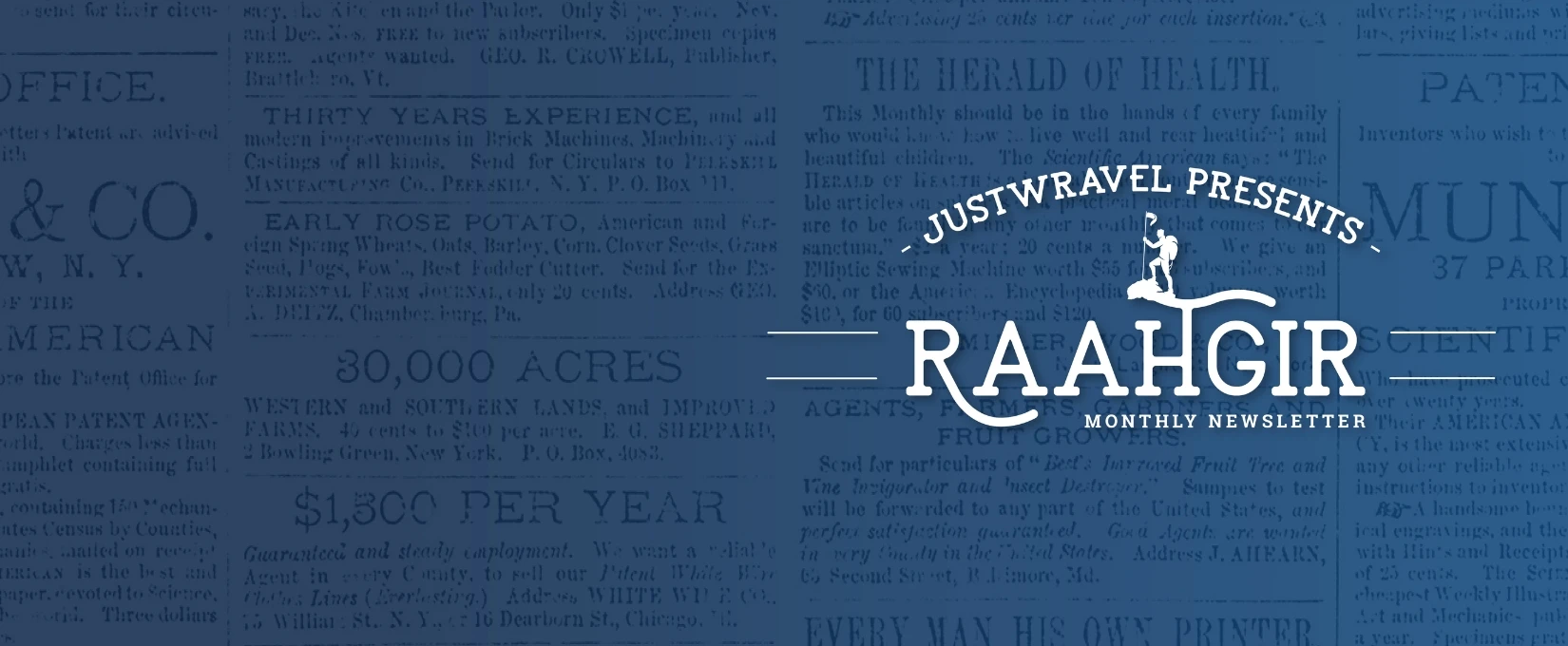
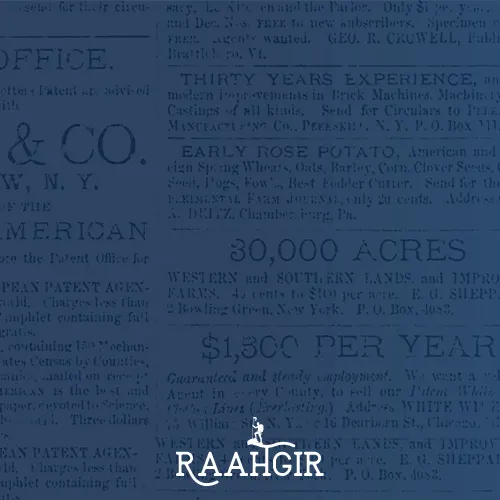
Newsletter
Sign up now!
Be the first one to know all about the Exciting Offers, Travel Updates and more.

B-42, 2nd Floor, Tower- B, The Corenthum, Block A, Sector 62, Noida, Uttar Pradesh 201301
© 2015-2025 JustWravel Pvt. Ltd.
Starts From
₹ 17,500

